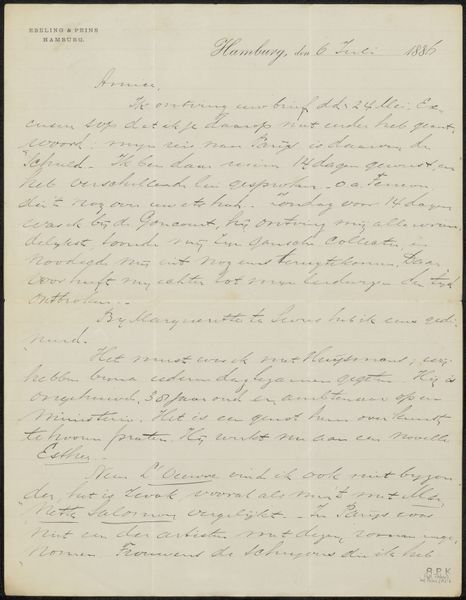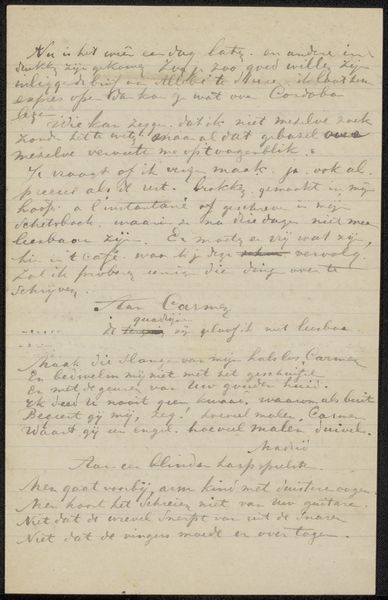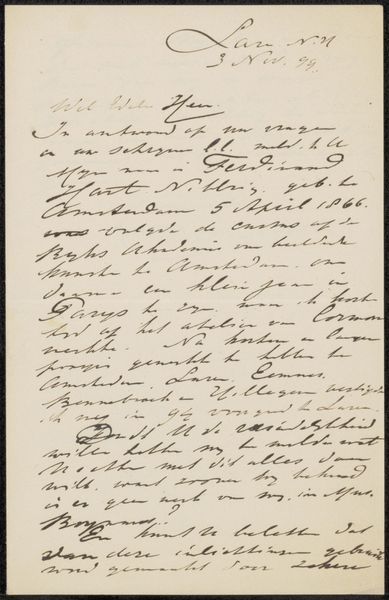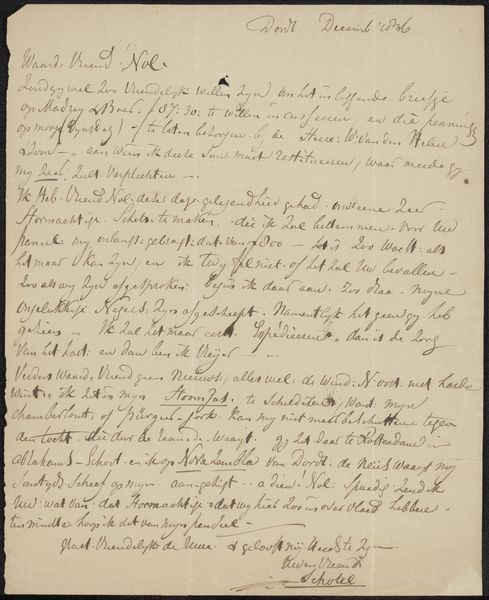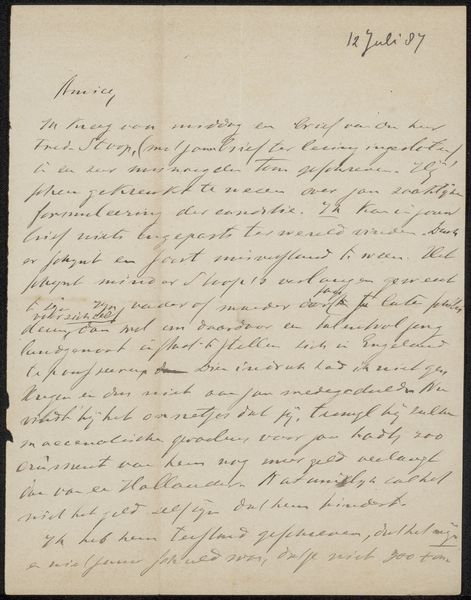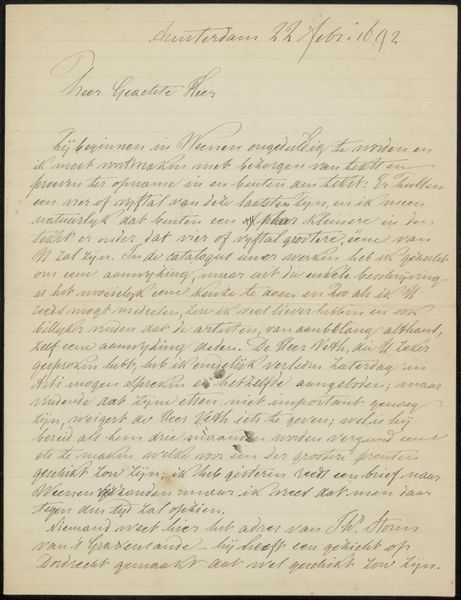
drawing, paper, ink
#
drawing
#
ink paper printed
#
paper
#
ink
#
monochrome
Copyright: Rijks Museum: Open Domain
Curator: This appears to be a letter, titled "Brief aan Philip Zilcken," likely from 1920. It's an ink drawing on paper. What strikes you first about it? Editor: The script itself, how personal it feels. Knowing it's addressed to someone makes it even more intimate. But beyond that, I'm wondering what someone would write that feels so historically significant to be in a collection? Curator: Good question. Consider the time period. This is just after the First World War, a period of immense social and political upheaval. Letters at this time acted as communication devices that were critical to cultural life. To whom was this letter written? What might their role have been in society at this moment? What might it mean for an institution to hold these documents now? Editor: Okay, I see what you mean. It isn’t just about the content, but who is speaking and how their relationship reflected larger societal happenings. So holding onto something so intimate can signal significance beyond just personal connection. Curator: Precisely. The role of galleries is so important in constructing historical narratives. How does keeping things that appear "normal," such as letters, within collections inform narratives, especially from less represented groups? Editor: I’d never thought of something as quotidian as a letter as potentially being a form of record keeping, making it something museums should catalogue and display! Curator: Exactly! It can influence how we consider the past and those who lived through it. Hopefully now we both think differently about this.
Comments
No comments
Be the first to comment and join the conversation on the ultimate creative platform.

